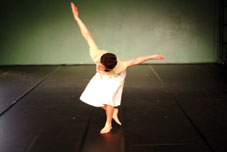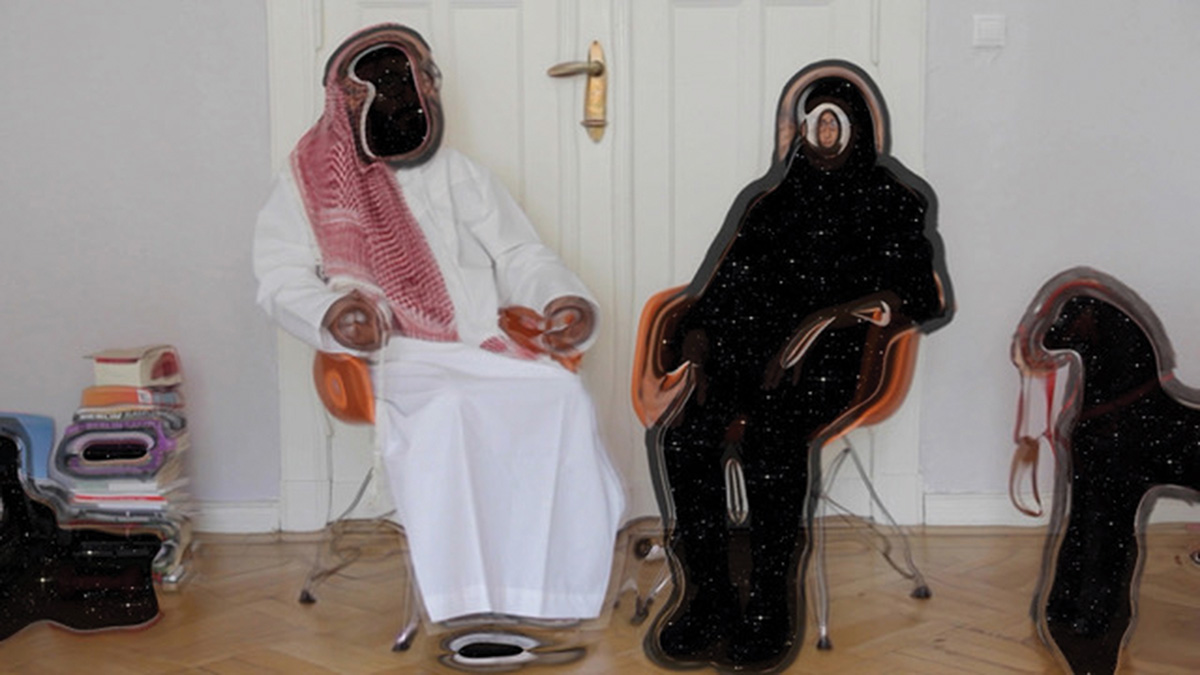Catalogue > List by artist
Browse the entire list of Rencontre Internationales artists since 2004. Use the alphabetical filter to refine your search. update in progress
Yang Qiu
Catalogue : 2018Xiao Cheng Er Yue (A Gentle Night) | Fiction | 4k | color | 15:5 | China | 2017
Yang Qiu
Xiao Cheng Er Yue (A Gentle Night)
Fiction | 4k | color | 15:5 | China | 2017
In a nameless Chinese city, a mother with her daughter missing, refuses to go gently into this good night.
QIU Yang was born and raised in Changzhou, China. He studied film directing at the Victorian College of the Arts, Australia. His last short film A Gentle Night was selected for the 70th Festival de Cannes Short Film Competition in 2017. And in 2015, his short Under the Sun was selected for the 68th Festival de Cannes Cinéfondation competition and is now selected for more than 80 international film festivals, including the AFI Fest, New Directors/New Films, Clermont-Ferrand, Palm Springs and nominated for the 52nd Taipei Golden Horse Award. He has been chosen to participate the Taipei Golden Horse Film Academy, mentored by the legendary film master Hou Hsiao Hsien, as well as the Swatch Art Peace Hotel residency in Shanghai. He is currently developing his first feature project Under the Sun (same title as the short), which was selected for the CineMart 2016 and Cinéfondation Residence 2017.
Morgan Quaintance
Catalogue : 2025Efforts of Nature | Video | 16mm | color | 19:0 | United Kingdom | 2023

Morgan Quaintance
Efforts of Nature
Video | 16mm | color | 19:0 | United Kingdom | 2023
Combining low resolution footage, 16mm film and satellite imagery, Efforts of Nature considers the passage of time, processes of change and dissolution from two distant perspectives: the existential level of the body and the planetary level of shifting geological conditions.
Morgan Quaintance is a London-based artist and writer. His moving image work has been shown and exhibited widely at festivals and institutions including: MOMA, New York; Mcevoy Foundaton for the Arts, San Francisco; Konsthall C, Sweden; David Dale, Glasgow; European Media Art Festival, Germany; Alchemy Film and Arts Festival, Scotland; Images Festival, Toronto; International Film Festival Rotterdam; and Third Horizon Film Festival, Miami. His practice remains open and responsive to contemporary experience and so largely eschews the rehearsal of set themes. However, interests in the human condition, the cultic milieu, counterculture, ethnography, Afro-Caribbean, East Asian and British histories, and the built environment are all mainstays. He is a 2024 MacDowell Fellow. He was the 2023 IFFR Short Film Nominee for the European Film Awards; the recipient of the 2022 ARTE Award at Kurzfilm Festival Hamburg; in 2021, the Best Documentary Short Film Award at Tacoma Film Festival, USA; the Explora Award at Curtocircuito International Film Festival, Santiago de Compostela; the UK Short Film Award at Open City Documentary Film Festival, London, the Jean Vigo Prize for Best Director at Punto de Vista, Spain, and the Best Experimental Film Award at Curtas Vila do Conde, Portugal; in 2020, the New Vision Award at CPH:DOX, Denmark and the Best Experimental Film award at Curtas Vila Do Conde, Portugal . Over the past fourteen years, his critically incisive writings on contemporary art, aesthetics and their socio-political contexts have featured in publications including Art Monthly, the Wire, and the Guardian, and helped shape and influence the UK’s new landscape of progressive cultural discourse and debate. A key reference here is his 2017 text The New Conservatism: Complicity and the UK Art World’s Performance of Progression, available here. From 2012 – 2023 he was the producer and presenter of Studio Visit, an interview-based, broadcast radio programme for London’s Resonance 104.4FM. The post-broadcast archive of over 100 interviews can be found here, and includes in depth conversations with Carolee Schneemann, Kevin Jerome Everson, Jimmie Durham, Susan Hiller, Jean Fisher, Andrea Fraser, Kathleen Daniel and Billy Woodberry.
Truong Que Chi
Catalogue : 2014Black sun | Fiction | hdcam | color | 12:55 | Vietnam | 2012
Truong Que Chi
Black sun
Fiction | hdcam | color | 12:55 | Vietnam | 2012
"Black Sun" is a Vietnamese rock?n?roll song from the ?70s. The song expresses the pessimistic view of young South Vietnamese before the impending unification of the nation in 1975. In 2012, the youths here are still wandering, singing this song. "Black Sun? attempts to capture the image of a young couple, strolling around the cityscape of Saigon, the most exciting city of Vietnam.
Truong Que Chi was born in 1987 in Hanoi, Vietnam. She is graduated from the University of Lyon 2 with a degree in film studies and is currently studying a Master at the University of Paris Nouvelle Sorbonne (France). Focus on using moving image as an art material, experiment with fiction, documentaries or video installations; Chi projects explore from the urban landscape to the landscape of the mind as a theatrical stage, where show any assignment of fiction and reality, of memories and present, the cruelty and the poetic of the ephemeral.
Albert Quesada
Catalogue : 2007Solo on Bach | Experimental video | dv | color | 14:0 | Spain, Belgium | 2005

Albert Quesada
Solo on Bach
Experimental video | dv | color | 14:0 | Spain, Belgium | 2005
The musical piece nowadays known as "Goldberg Variations" was published in 1742 with the title "Keyboard practice". As its original name states, they are musical scores to be practiced. In this solo performance, several spatial and movement scores have been intentionally created to be practiced with a specific soundtrack. The sound score proposed consist of outtakes of a recording from Glenn Gould?s "Goldberg Variations" in 1955. The music is presented and as is the performer. They take a parallel journey through the piece, having constant and discontinuous dialogues, shifting the approach to what perception is. These different approaches are fed by the sound score, which consists not only of music but also of dialogue. Text, words, spoken aloud by a human body can be as rich in its complexity as a musical score. The sound informs and directs the dance vocabulary in a particular way. Glenn Gould, as a performer in his early days, chose to play Bach in a very personal way. Here the dancer, the performer, chooses to present himself in a certain outfit that isn?t quite normal at first sight. This solo is a solo performance practice. Bach and Glenn Gould direct.
Albert Queseda was born in Barcelona in 1982, and now lives in Brussels. He studied theatre and philosophy and is currently a performer and choreographer. He performed his dance training in Barcelona, Amsterdam and Brussels, in various schools and seminars. His background includes modern dance techniques and other movement and body awareness methods, focusing on one?s own way of dealing with the world through improvisation in its different forms: free improvisation, contact improvisation, etc. The freedom of improvisation in a specific set forms the core of his creations. Very influenced by Deborah Hay?s approach to performance ("Your perception is your dance"), he develops practices in order to survive and experience the dance. In his most recent works he concentrates on the movement outside of the functionality of its action, where it becomes necessary and pure. The mind drops into the body to accomplish a specific task. Quesada is currently organizing the CI-Jams and Set-Improvisation Jams. He performs improvisation pieces/event in Amsterdam, Brussels and Barcelona.
Emma Quinn
Catalogue : 2007Institute of Contemporary Arts | 0 | 0 | | 0:0 | United Kingdom | 2007

Emma Quinn
Institute of Contemporary Arts
0 | 0 | | 0:0 | United Kingdom | 2007
Institute of Contemporary Arts: As home to some of the best new art and culture in Britain and from around the world, the Institute of Contemporary Arts (ICA) is the meeting point for artistic exploration and audience engagement, examining the questions that shape culture, society, and individual lives. As such, it is one of the world's most innovative and historically influential contemporary art institutions. Located on The Mall, London, it houses three galleries, two cinemas, a theatre for live music and performance events, an extensive talks program, and a late night bar and café with free WIFI. The ICA believes in creative adventure, in exploration and discovery, and in art as inspiration. Ultimately the ICA is not so much a place as a principle, a belief in the new with an enduring faith in the power of creativity. Live and Media Arts: The ICA's program of Live arts (performance, theatre) and Media Arts (computer generated, mechanical, installation, sci-art) has led the way in supporting these art forms since the ICA was first formed in 1947. The ICA supports artists who utilize the ubiquitous technologies, both high and low end, that surround us. These artists let us experience the world in ways we never dreamed and allow us to experience our society from a new perspective. Engagement with issues that have a bearing on our daily lives and thought provoking discussions around the work shown are central to the ethos of the Live and Media Arts program.
Emma Quinn is the Director of Live and Media Arts at the ICA. Before working at the ICA she worked at the Millennium Dome as Content Manager for the Mind Zone and co-curated independent exhibitions including "White Noise" in Brick Lane, and "sQuawl" at the Oxo Tower. She also gained commercial experience working for new media companies including the art group Soda Creative Ltd. She is a member of the art group Spore. She earned a MA in 1997 in Digital Arts from Middlesex University, where the focus was hands on programming for the computer.
Ibrahim Quraishi
Catalogue : 2023Camels are whispering | Experimental video | hdv | color | 7:0 | France, Germany | 2022

Ibrahim Quraishi
Camels are whispering
Experimental video | hdv | color | 7:0 | France, Germany | 2022
Camels are whispering I & II is a 2-channel video installation by Ibrahim Quraishi, exploring change in human relations. Heart of the work are 2 videos of the artist with his mother, questioning that impactful relation of self-identification. Around it we hear voices of artists, activists & thinkers; people who dare to go against the grain. People who take an exceptional position & don’t vote with the majority in times of trauma, conflict or change. In a cross cultural, transgender, cross historical mix of pre-recorded statements, these outsiders are talking about why they felt change is needed. The public will be learning, sometimes laughing or crying from accounts of the participants who tell short stories no longer than 3 minutes. The selected voices of artists, philosophers, activists are: Angela Davis, Judith Butler, Marina Abramovic, Serge Latouche, Nawal Al Saadawi, Noam Chomsky, Yuval Noah Harari, Assia Djebar, Hanna Schygulla, Jessica Ekomane, Komi Togbonou, Seyran Ate?, Yara Mekawei a.o. This video installation was conceived together with the ecological architectural collective, RaumlaborBerlin, winners of 2021Golden Lion Venice Biennale for Architecture. Sound compositions are by Eunice Martins, Heidrun Schramm, Mike Ladd and mixed by composer Norscq. Videographer & animation by Alex Weiss.
The art of Ibrahim Quraishi focuses on change, inter-cultural resistance of our socio-political realities. The ”2017 List of 50 most exciting artists in Europe right now/ART NET Survey” stated: "Quraishi is a visual artist whose work encompasses various media such as video, film, analog photography, painting & performance installations. Quraishi is characterised by a nomadic existence & divides his time between several cities across Europe & the Middle East. He consciously explores the dynamics of migration and he engages in research, teaching & creative work simultaneously in various cities & spaces”. Quraishi recently launched a research group on integrated ecology & artistic practice in Lahore called “Electric Rickshaw” with The School of Moving Images in Teheran. He is currently a member of the Fine Arts Department at Gerrit Rietveld Academy Amsterdam. He was guest professor at Netherlands Film Academy Amsterdam 2014-2017 & he thought at Art University of Amsterdam between 2007-2014. He is in the midst of finishing his first feature film “Holy Mama.”. He is a regular cultural columnist for taz, die Tageszeitung DE & counterpunch US. In 2021-22 he was fellow of Stiftung Kunstfonds Germany. Most recently, Kino Arsenal Berlin screened the rough cut of his film “Baumchen Wechsel Dich”about multiple notions on migration, children & identity.
Oscar Qvale
Catalogue : 2013Escape Velocity | | | color | 5:0 | Norway | 2009
Oscar Qvale
Escape Velocity
| | color | 5:0 | Norway | 2009
Technology?s physical past is fading. It is carefully covering its trails, leaving only behind negative connotations of its former, inner self; boards, circuitry and cables ? in essence its vital organs. These are present only in niche-fiction and reports on devious activities. Simultaneously, we are pouring ourselves into a collective stream of information, be it in the form of text, video, images, symbols and game avatars. We look to escape our shortcomings, to live vicariously through fictional characters ? we maneuver a space in which we are the compressed versions of each other. It is the convergence of our self- created fictional worlds with the external collective one, in the form of our preferred ways of communication. Material drawn from the different sources of our ?collective stream of information? is the basis of short films. It?s a collage of established narrative techniques, collected personal data and taped conversations. I reach out to an intimate social environment and retrieve a subjective visual record. Any documentation will be inherently flawed, extracting only some parts of a whole. The films organize diverse and dissonant elements in a cinematic dynamic that contracts. We see a small group conspiring together, concerned about shaping an object that is not yet present. It is the absence of a device or an idea. There is a strong dramaturgy to their rituals, like believers playing out a strict, scripted set of actions. By devotion and affection they seem to be wafted on into a world of enclosed private experience. It is where the mundane hobbyist encounters the darker parts of his domain. The tactile ? the construction and assembling of objects ? becomes the backdrop for a continuous deciphering of messages. The viewer is torn between a media-constructed paranoia and the comfort of the fictitious adventure ? the presence of technology is lost in science-fiction. It dissolves into an external image-space, one that exists both as a contemporary and as a distant memory. It represents a contemplative comfort-zone, turning to the realm of the private dream. This is the forensic scene. This is the place to investigate. The recurring narratives are reaching for this space, through the alienation of the familiar, by the means of forgotten devices.
Oscar Qvale (b. 1985) lives and works in Oslo. He earned his BFA degree from the Bergen National Academy of the Arts and Hochschule für Grafik und Buchkunst Leipzig (HGB), specializing in photography. In 2012 he received his masters degree from the Oslo National Academy of Fine Art.